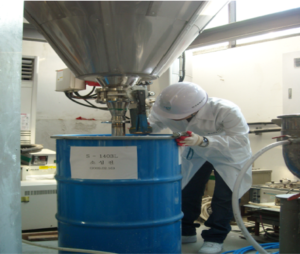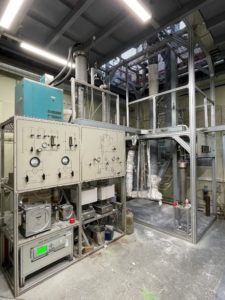NST – Designing petrochemical process for energy efficiency and carbon abatement innovations
EARTO Innovation Awards 2021 – RTOs International Network (RIN)


The National Research Council of Science and Technology (NST) has run a Convergence Research Center Program in order to address contemporary national issues and large-scale technical challenges through cooperation among its 25 Government-funded Research Institutes (GRIs) since 2014. Under this program, the Korea Research Institute of Chemical Technology (KRICT), the Korea Institute of Science and Technology (KIST), the Korea Institute of Machinery and Materials (KIMM), and the Korea Institute of Energy Research (KIER) have organized a joint research group dubbed the Center for Convergent Chemical Process (CCP), consisting of 139 researchers – 61 from four institutes and 78 from companies and entrusted institutes. As one of the representative projects of the Program, the CCP has contributed to maximization of fossil fuels efficiency and carbon dioxide abatement in line with the Korean New Deal for the period of the project (2014-2020).

CCP’s technology will contribute to 20% energy reduction and CO2 emission in light olefin production
 About 40wt% improvement of light olefin yields can be achieved through a newly developed catalyst
About 40wt% improvement of light olefin yields can be achieved through a newly developed catalyst Contributed to sustainable growth and CO2 reduction in petrochemical industry through convergence technology
The most commonly used energy sources today are still fossil fuels. According to the British Petroleum Energy Outlook 2030, oil, coal and gas will still be the major fuels in 2030, accounting for 80 percent of global energy consumption. However, CO2 emission is a big burden and for sustainable growth, the reduction of energy consumption and carbon dioxide is inevitably required. To maximize fossil fuel efficiency, hybridization of catalytic naphtha cracking (K-COTTM) and MTO (methanol to olefin) has been tried firstly by four institutes under NST (KRICT, KIST, KIMM, and KIER).
Strengthened cost competitiveness of petrochemical products by stabilizing supply of chemical feedstock
The production of light olefins requires a large amount of energy and the separation of olefins and paraffins is one of the most challenging and energy-intensive processes. The CCP has developed a hybridized catalytic cracking process (Naphtha-Methanol To Olefin, or NMTO): Hybridization of endothermic reaction (Naphtha Cracking) and exothermic reaction (MTO). 20% less energy consumption can be achieved by NMTO in comparison to conventional thermal cracking. In addition, separation of olefins and paraffins through a new porous hybrid adsorbent (MOF) could further reduce energy consumption by up to 10 percent, compared to conventional olefin separation processes.
Secured future energy resources by adding value to the heavy oil and opportunity crude
The CCP has developed a slurry hydrocracking process of converting low-grade crude oil having high asphaltene, metal, and sulphur impurities. Through high-efficiency slurry hydrocracking catalyst and process, more than 95wt% of asphaltene can be converted and coke level can be reduced to less than 5wt%. In addition, by applying membrane contactor technology, hydrogen (99.9%-H2) needed for hydrocracking can be successfully supplied from carbon steel off-gas (LDG). The developed process was demonstrated successfully in continuous bench system.

The National Research Council of Science & Technology (NST) was established in 2014 to support policy-making work of the national research programmes and take the lead in the knowledge-based industry by systematically supporting, fostering and managing the twenty-five government-funded research institutes (GRIs) in science and technology.
The Center for Convergent Chemical Process (CCP) consists of four GRIs under NST.
Principal Institute: Korea Research Institute of Chemical Technology (KRICT)

Cooperating Institutes:
Korea Institute of Science and Technology (KIST)

Korea Institute of Machinery & Materials (KIMM)

Korea Institute of Energy Research (KIER)
![]()
© Photos Credit: NST, KRICT, KIST, KIMM, KIER
< Previous Next >

